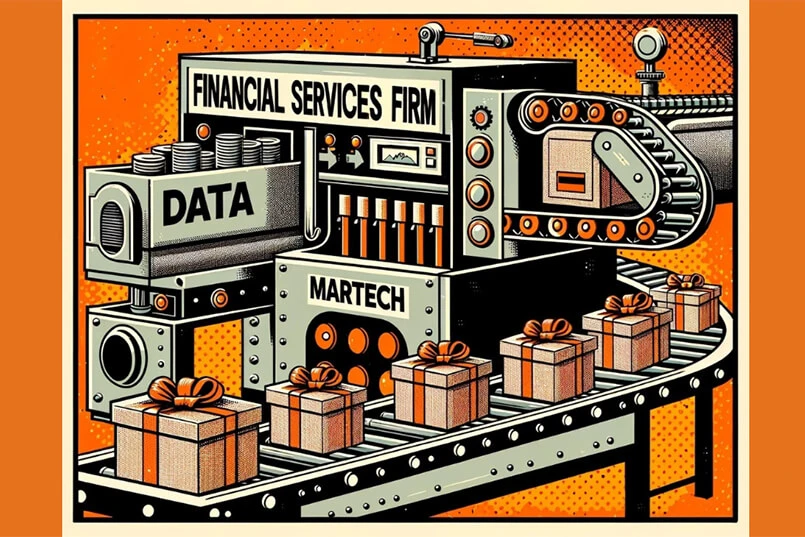Michael Farmer recently published this great thought-provoking article.
He identified the issue of creative agencies taking on more and more work, whilst continuing to under-price when it comes to negotiating their fee arrangements with clients. Partly out of “Fear of losing the client / prospect”. This has led to two major industry-wide issues – devaluing creative work, and commodity pricing.
Michael outlined three great ways in which senior agency executives could lead an industry turnaround and start fighting for premium prices.
I totally agree with him. However, this also got me thinking about a three other things:
- The need to re-frame the concept of creativity
- Ideas are more important than ever
- How to price and value ideas
1. Does the advertising industry need to re-frame what it means by creativity?
Most agencies still work with Art Directors, Copywriters, and Creative Directors being the driving forces. With a myriad of other specialists (ie: media, tech, data, digital, content etc) all being involved to varying degrees to ensure that 360 degree or integrated channel ideas are being delivered, along with all the BAU and always-on activity, for clients.
We can thank the legendary William “Bill” Bernbach, one of the three founders of Doyle Dane Bernbach (DDB), for this. He broke with tradition back in the late 1950s. The Volkswagen Beetle ‘Think Small’ Campaign was a result of having copywriters and artists sitting together with equal status.
Prior to this, copywriters and artists were pretty much told to separately fill in the spaces they were given by the account execs for any product advertising required.
This new way of co-working was genius. And has been the standard in the industry for over 60 years now.
However, it worked for a time when creativity was quite linear. Where the creative outputs were readily identifiable – a TV ad, print ad, video, billboard, direct mail piece etc.
It also worked when media fragmented and new digital silos started needing targeted creativity for websites, online advertising, email, mobile, games, and social media content.
However, over the past 5 years, as agencies attempted to break down the silos that they had built up, creativity became more and more confusing to identify. Lines of ownership became blurred.
We now live in a world where anything and everything can be deemed creative. A sculpture by the sea, a stunt into space, a bucket of ice, a fragrance, a sound, a swipe. And that’s just to name a few external creative outputs.
Then there’s creativity in delving into and leveraging data; creativity in aligning technology to a user journey; creativity in artificial intelligence handling relationships; creativity in turning something into word of mouth and creating advocacy; creativity in finding new partnerships and affiliates; and creativity in accelerating business growth through mergers, acquisitions, start-ups, and incubators.
With the change in creative opportunities, comes an explosion of executions. According to Michael Farmer’s US analysis, for every 10 creatives amongst an agency roster, today’s typical Scope of Work involves 3,000 deliverables across all media types.
And in one media relationship recently diagnosed by TrinityP3, there were 9,000 separate interactions involving 20 agency FTEs across 15 processes.
It’s mind blowing how dramatically agency outputs have increased.
If you agree that creativity has changed, then maybe it’s time to rethink the current ‘traditional’ art director / copywriter team model. Is it time for agencies to change the Art Director/Copywriter team concept and create a more wholistic team of creative and business thinkers?
So the first outtake for the advertising industry is the need to re-frame what creativity actually is. And to move away from pure communications outputs, and evolve to creativity being defined as solving business and marketing challenges for clients.
2. Ideas are more important than ever
If you agree with the above, then a logical progression is to realise that ideas are more important than ever. We’ve been hearing many in the industry tout this over the past few years as more and more specialists frittered away A&P budgets to execute their channel specific activity.
But rather than getting stuck with a myriad of executions which simply deliver on a ridiculous scope of work in the hope of working because everyone else is ‘doing the same’, then there’s an opportunity to change tack.
There’s an opportunity to get back to central ideas that solve problems. Central ideas that prioritised executions can ladder to logically and effectively. Central ideas that can actually be measured in terms of meeting business objectives rather than nebulous engagement metrics. Central ideas that can be solved by the new ‘creative and business thinking teams’.
The second outtake is that there’s a real opportunity for the industry to stand up and be accountable for big ideas that impact culture and community. And by association, agencies can focus resources on ideas versus execution accordingly.
However, to do this, fee arrangements and the notions of cost and value need to change.
3. How to price and value ideas?
It’s time to change the way ‘creativity’ is priced.
Which raises the possibility of the creative idea separating from the creative implementation and how the value / price should be in both the idea and the implementation
Do ideas have value separate from implementation? If they do, then how do we value ideas and how do we value implementation?
Typically head hours, materials and outputs are projected based on a scope of work, and a fee arrangement is locked in.
However, this only serves to perpetuate the problem of creativity being devalued.
Clients, in particular procurement departments, tend to compare hours for hours between agencies and screw the agency down to deliver cost savings.
Little regard is given to the type of creativity and ideation actually required. And whether the ideation actually solves a business problem and delivers bottom line growth.
We all know where performance based remuneration has gone. Mostly down the toilet for fear of succeeding and paying agencies too much. Or being too complex to link agency performance to client success. As a result agencies and clients have typically fallen back on a cost based model.
But based on the concept of creative and business thinking, agencies could charge a premium for solving business and marketing problems through a myriad of creative techniques with a myriad of relevant resources. And charge differentiated pricing for implementing the idea into specific activity.
The final outtake. The current agency pricing model is broken. Agencies face tough hurdles. However, there is an opportunity to drive change, and start charging premium prices again for delivering great value.
Is it you?
The time is ripe to take the industry to its next stage of evolution. Will someone simply say enough is enough, and decide to stand out like Bill Bernbach did back in 1959?
TrinityP3’s Agency Remuneration and Negotiation service ensures that the way in which you pay your agency is optimal. Read more here




